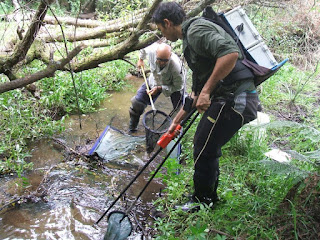It would be expected that over the next few years an effective programme will be developed that is safe, reliably effective and financially sustainable. This programme could then be rolled out through the extensive city gully system to protect our native fauna and to dovetail into the planting restoration that is going on in many areas.
Hamilton City Council and Waikato Regional Council are already carrying out control programs on some areas of public land. What is really important is to get the support from those households that back onto the gullies where these initiatives are operating. It may be as little as arranging for a person to have access through your property or could be to have a trap or bait station installed in the gully behind your house and you to service and feed that information into a computer. Whatever programme we end up using we are going to rely on community support to make it effective and financially viable across the city.
Predator Free Hamilton Trust; running a trial in the Onukutara gully from Crosby Road to Wairere Drive/Hukanui Road intersection. They have conducted research to identify the range of the two main species of rat and possums to guide trap setting locations and will be using A24 Good Nature traps for rats and Timms traps for possums. For more information on this programme contact Kemble Pudney, ph 8525290 or email watsonia58@gmail.com.
Mangaiti Gully Restoration Trust; are rolling out a bait station system they have been using in their restoration area for the last five years to the gully system inside Gordonton Road, Wairere Drive, Thomas Road and Hukanui Road. For more information on this programme contact Rod Ade 852-5256 or Rex Bushell 854-0973 / 021-237-3857
The third one that has applied for funding through Predator Free NZ and Kiwi Bank is Riverlea Environment Society who operate around the Hammond Park – Riverlea area. The community support can start right here by clicking on this link Riverlea Predator Control Funding and giving them your vote to support their funding application. Voting closes on the 25th November. Remember- your vote does count! Or contact Adrienne Grant adriennegrant01@gmail.com


